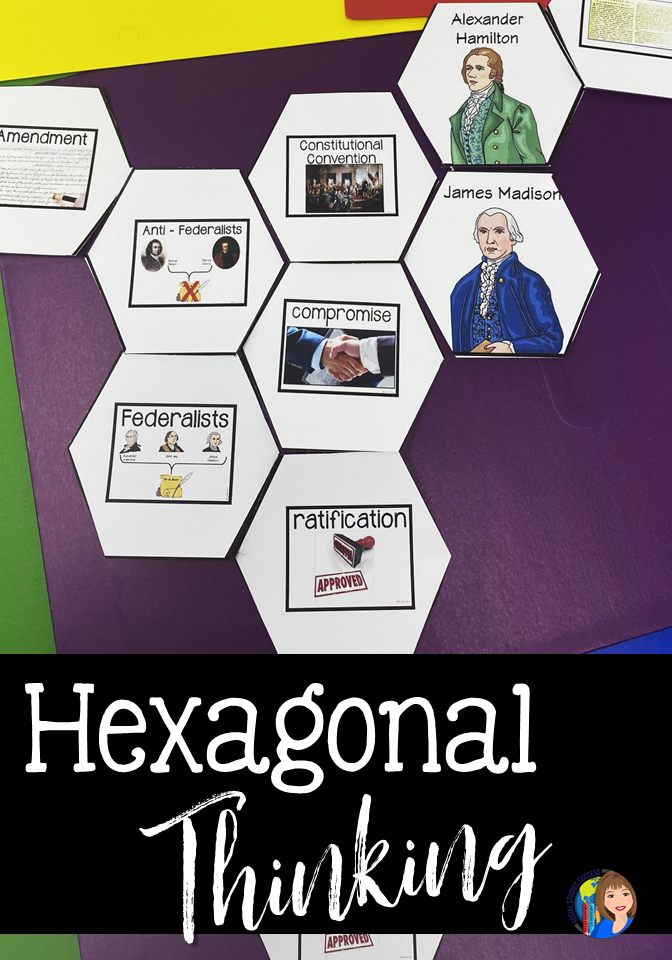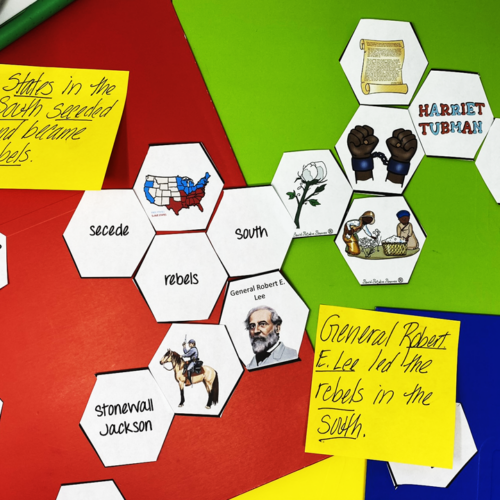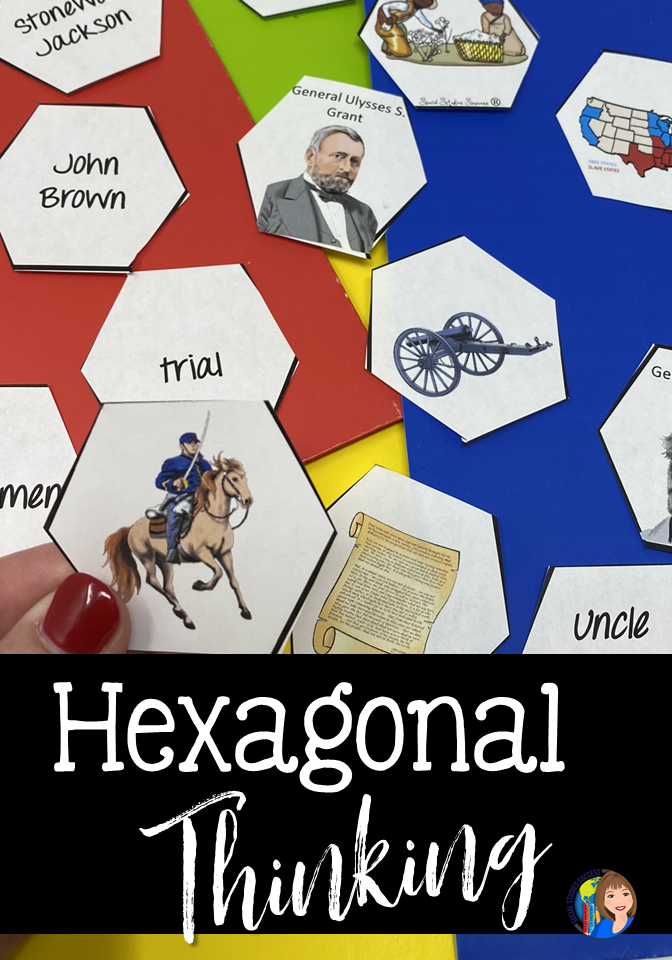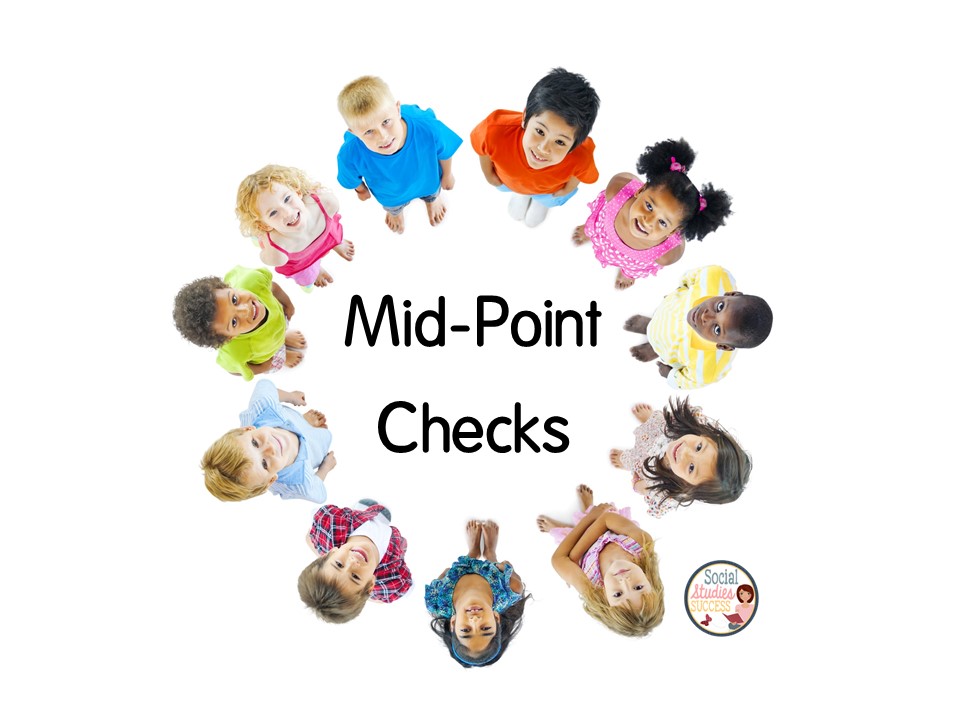If you are like me, you are always looking for new and exciting ways to engage your students in Social Studies. I try at least one new strategy a year to expand my own teaching craft. I discovered Hexagonal Thinking last year, and I ABSOLUTELY LOVE IT! Students are having in depth conversations about their content and that is always a win in my book!

So what is Hexagonal Thinking? Hexagonal thinking is a great strategy to help students review relationships between events and connections over time. The 6-sided hexagon shapes allow students to build deeper connections and make conceptual thinking visible. The discussion between students as they play with the resource can also help cement ideas and understandings of key events. In other words, students have fun while making connections within their content!

Prior to using this strategy, you will have a few decisions to make; you will need to decide if you want this to be a permanent product, or for students to simply explore the connections and have deep discussions. Will your students will glue down the shapes onto paper and turn that in for a grade? Or will they annotate their hexagon using post-it notes or index cards?
If you choose to glue down the shapes, you will need 1 set of game pieces for every group throughout the day. If you want to annotate with post-it notes, you can make fewer copies, but I would recommend that you laminate the hexagon shapes prior to class.
Here are the step by step directions for using Hexagonal Thinking in your class:

- Prepare your set of Hexagon shapes. You can make your own set using hexagon shapes in PowerPoint or use a set that has already been created. Make sure you are including all of the key information you want your students to review in a particular unit. If you can add images, that will help cement content with your students.
- Introduce the students to the game by modeling how to rearrange the hexagon shapes to show relationships between people, places, events, dates, and key vocabulary terms. An effective model is the key for making this strategy work! If you don’t want to use content examples, you can always create a set based on your school or current pop culture information.

- Challenge your students to arrange the shapes showing these relationships between people, places, events, dates, and key vocabulary terms. To make it into a game format, you can award points for the number of connections students can make between shapes. Each side of the hexagon is worth 1 point. The more connections students can make between shapes, the more points they earn.
- Encourage students to annotate their thinking, either by gluing the shapes down on paper and writing next to each cluster of shapes – or – by using post-it notes to annotate their connections.
- Listen… walk around the different groups and listen to their conversations, encourage your students by asking different questions about their connections and evaluating their explanations.

Looking for a twist on Hexagonal Thinking as a review activity? Use Hexagonal Thinking during a lesson for students to make a connection after a reading. In my Colonization of Latin America activity, I have created several sets of hexagons that can be passed out after each page of reading. Students start with one set of hexagons, and then as they read more information, they layer in more Hexagon shapes. I recommend creating the hexagon shapes on different colored paper so that students can see change over time.
If you like Hexagonal Thinking, I have several sets created for you – both as an assessment and as a processing activity after a reading. You can find them here.
Let me know what you think in the comments below 🙂








